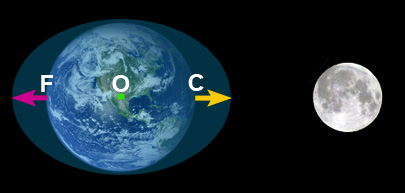 Tidal force is a secondary effect of gravitational force and its most common manifestation, at least on the planet Earth, are tides. Tidal force, by technical definition is the differential force of gravity which arises because the force exerted on one body by another is not constant across the diameter in that the side which is the nearest to the second body is subject to more gravitational force compared to the side farther away.
Tidal force is a secondary effect of gravitational force and its most common manifestation, at least on the planet Earth, are tides. Tidal force, by technical definition is the differential force of gravity which arises because the force exerted on one body by another is not constant across the diameter in that the side which is the nearest to the second body is subject to more gravitational force compared to the side farther away.
If a body is rigid or the complete opposite – flimsy, tidal forces can tear the body in half. However, the Earth is an elastic sphere and the tidal force from the moon, in a way, distorts its shape although the mass or volume is not affected at all. Bulges' indicate this change in shape — an indication of the changes in the ocean levels due to tides, specifically.
The moon pulls on the planet as a whole, although its effect on solid Earth is only minimal – a few centimeters. It has more effect on the atmosphere and the hydrosphere. The oceans get attracted to the moon, causing high tides. However, it is noticeable that the nearer oceans are pulled more than the father oceans located at the side facing away wherever the moon is.
Tidal force also has a more general usage in astronomy, referring to the phenomenon where a body is subject to the gravitational force of a second body, while being subject to the gravitational force of a third body simultaneously, as in the case of the moon being primarily influenced by the Earth's gravity (due to its proximity) while being affected by the sun's gravitational pull as well.
